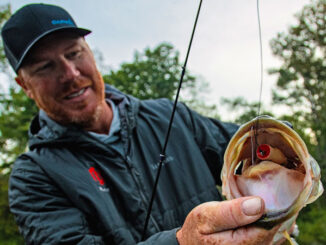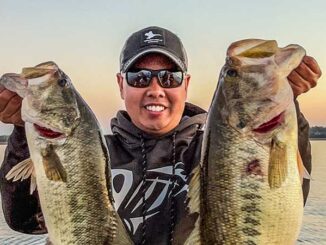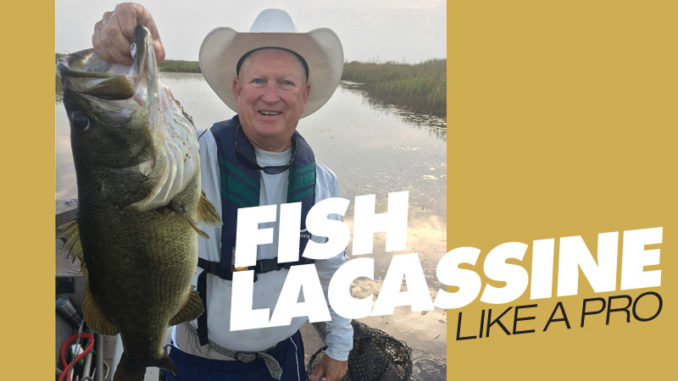
Bassmaster Classic winner Jack Hains loves this lake. Here’s why
The big-bellied, dark green and black bass smashed the Chatterbait being pulled along a point in one of the most pristine marshes in the country, Lacassine Pool inside the Lacassine National Wildlife Refuge. The man on the other end of the fishing line, a man who made a name for himself by becoming the first bass angler from Louisiana to win the Bassmaster Classic Championship, set the hook as hard as the bass hit the Chatterbait.
Jack Hains of Crowley, who was born and raised in Rayne, was in his element, even in the elements, which were yucky that April morning in southwest Louisiana. Hains drove his Toyota pickup truck pulling the long, narrow aluminum boat powered by a Gator-Tail slowly on the highway through heavy rain and thunderstorms with beau coup lightning and hail to get to the Lacassine Pool he started fishing at age 15.
The 69-year-old outdoorsman wasn’t in the boat he borrowed from his son when he caught that beautiful 3-pound class bass under stormy skies.
It still was on the boat trailer until the last of the lightning crackled and cleared the area.
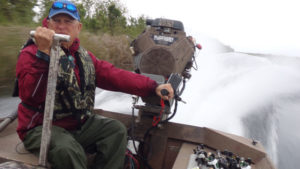
He was fishing from shore during a lull in the inclement weather, which prompted him to delay launching his boat more than two hours after his storm-related late arrival at the south landing at 8:11 a.m.
“Oh, yeah, he nailed it. That was fun,” Hains said soon after catching the bass.
He released the bass immediately after a quick photo session in the rain, then turned his attention to catching more bass from one of his favorite places to fish. He did get another good, hard bite from the shoreline on the Chatterbait brandishing a large, shad-colored swim bait but didn’t connect.
Closest thing to fishing in Florida
Hains has caught many more bass than he has missed since he started fishing at Lacassine National Wildlife Refuge. He likens the Lacassine Pool, loaded with Florida bass that grow to double-digit weights, to prime bassin’ waters in the Sunshine State.
“This is the closest thing to Florida that I have ever seen. It has the same grasses,” said the man with an accomplished professional bass fishing career, one that took him several times to tournaments throughout Florida.
The personable bass angler never, ever forgot where he came from. He continued to fish southwest Louisiana, including Lacassine NWR, which was created in 1937, the 123rd refuge established within the National Wildlife Refuge System. Hains has a deep appreciation for one of the true bass fishing jewels of the state, one that emphasizes providing migratory waterfowl habitat.
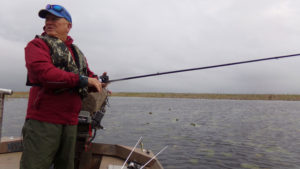
Bank fish or boat fish
“There’s a whole lot more to it (than ponds). This (Lacassine Pool) has a whole lot of Florida bass, big ones. You never know if it’s going to be a 4-ouncer or a 15-pounder,” Hains said as he drove the roads adjoining the pool on an impromptu tour because of the lingering storm system.
“That’s one thing about this place. You can fish up and down the levee, ‘bank fish.’ There’s some awful big fish caught at times (from the levee),” he said as he warmed up to his tour guide role. “There’s a lot of canals to fish. See, you can fish the banks all through this. All there is is fishable water.”
Boaters, of course, are able to probe the interior’s flats, pools and canals. The results are amazing as double-digit bass after double-digit bass are recorded from the time the Lacassine Pool opens March 15 and closes Oct. 15.
On Oct. 7, 2017, Hains and his son, Joey Hains of Carencro, 41, enjoyed a trip to Lacassine Pool that won’t be forgotten. The elder Hains boated a 10.51-pounder and his son got his hands on an 11.46-pound hawg, both hooked and boated within an hour of each other while they were “punching” with soft plastic creature baits.
“That was absolutely insane. We caught a bunch of other big bass that same day,” he said.
“It’s a fun place to fish. Fish are all over it but the fish ain’t everywhere. Does that make sense? Find the right color (artificial lure), find the right bottom, fish are in it. There’s a lot of sandy bottom in here,” he said. “Normally, these fish are in schools. You find one and there’s others together.”
That it all looks ultra-bassy can be intimidating inside the 16,000-acre impoundment. Like fishing vegetation? There’s plenty of bulltongue, primarily, as well as maidencane, watershield, waterlily, spikerush and southern bulrush.
“There ain’t nowhere in here that don’t (look bassy) is the problem,” Hains said with a knowing smile.
Places to fish
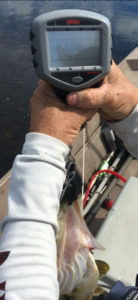
That bass he caught from the shoreline earlier in the day was the biggest of the trip targeting two large areas on the north end, he said, and the south end of the west side. He also caught bass on a Stanley Ribbit, one of his all-time favorites, and a black flip-tail plastic lizard once he finally cranked up the Gator-Tail and ventured to his favorite spots in the Lacassine Pool. He also threw with a great deal of confidence a black buzz bait and a whitish Spro soft plastic frog, the bigger, popper model.
Where will a majority of the bass be at the start of this summer?
“Well, they seem to hem up in some of the ponds in June, 5- to 6-feet deep, instead of the flats. As it gets warmer, they go deeper,” he said.
He’ll be back then and, hopefully, there won’t be a toad-floater the same day.
Best spots and baits for June
“There are tons of stuff (habitat) available there. There’s not just one particular area. There are several,” he said.
In June he’ll probably point the bow of his boat to the bottom pool, he said, because normally it has deeper water. After fishing that area thoroughly, he’ll target the north and south sides and concentrate mostly on milfoil and peppergrass.
As for the deeper waters, Hains said, “Everywhere there’s a bridge and levee, there’s a ditch cut. Most of the deeper holes are manmade.
While the bass generally transition to the deeper areas of the Lacassine Pool, many can be caught in shallow water early and late, he said from experience.
Dark-colored GYCB Senkos and Zoom Super Flukes, as well as similarly colored 10-inch plastic worms, should put bass in the boat this time of year, he said. Black or purple colors are most effective. And large shad-colored swim baits trigger many bites in early summer, he said.
His favorite topwaters are watermelon red/pearl Stanley Ribbits and a white Spro Bronzeye Baby Popper Frog. Also, a 3/8-ounce black Snagless Sally with a gold blade triggers bites in and around the various grasses, he said.
Try not to troll
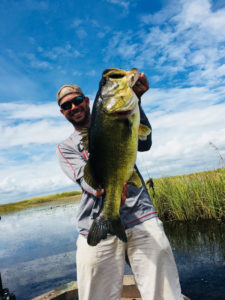
A majority of the time, he stopped the motor and let the wind blow the boat.
“Mostly, this is how I fish, drifting (the flats). The less you can hit the trolling motor, the better off you are. You don’t spook them. There’s so much vegetation the trolling motor (blade) is going to hit a stem,” he said.
The early morning deluge that dropped 4 inches of rain in a two-hour period on nearby Lake Charles, which is to the northwest, also raised the pool level considerably, perhaps by about a much a foot.
“I think we can go just about anywhere we want to go. Very seldom do you see that much water here,” Hains said.
“We needed a little rain … not a flood. I would have taken about 3 inches in three days, not 3 inches in three hours.”
That he was able to get on the water finally was a relief. However, it did rain more around midday but that didn’t deter Hains.
“I’m ready. I’ve been ready. I’ve already changed baits three times in my mind. It’s going to be windy. But it’s all right. They’re going to be hungry. They better be. There’s no reason for them not to be,” he said as he launched the boat.
Hains gave the pool’s bass every opportunity to eat all of the artificial lures he had tied on, his favorites over recent years. They have changed significantly since those days before the two state-of-the-art boat launches were built, the days when he pulled over the rollers.
“We used to fish (and catch on) Hawaiian Wigglers, Jitterbugs and other vintage artificial lures of the era, the late 1960s and early 1970s, he said, noting Snagless Sallys also were boss at the time.
Life after winning the Bassmaster’s Classic
The former Bassmaster and FLW pro grew up on his family’s farm in Rayne, where he fell in love with catching bream and bass in a pond on the property. The Hains family also had a camp at Lake Arthur, where there was a small flat-bottom boat, very convenient for a young bass angler who wanted to fish area waters, including Lacassine NWR.
He focused on bass and did more fishing, especially after high school, he said. The Rayne outdoorsman funded his bass fishing ventures as a crop duster pilot working over the agricultural fields in Acadia Parish, earning his pilot’s license at age 18.
His passion for bass fishing grew. He became a competitive bass angler in a bass club, fished locally and regionally, and naturally found his way to the pro ranks. He was 25 years old when he was crowned Bassmaster Classic champion in 1975, which happened to be his rookie year in B.A.S.S.
Hains won $15,950 with 18 bass for 45 pounds, 4 ounces, in the fifth annual Classic, held at Currituck Sound, North Carolina, on the fledging circuit run by Ray Scott of Arkansas. He qualified for seven more Bassmaster Classics and also fished the FLW. In 152 tournaments he had 24 finishes in the Top 10 and 35 showings in the Top 20, good enough for more than $300,000 in prize money.
He retired from professional bass fishing in the early 2000s. He also was a bass fishing guide 18-20 years at Toledo Bend, where he also loved to hunt deer and wrote the Toledo Bend column for the Louisiana Sportsman, then in 2000 became a deer hunting guide at The Silos Hunting Lodge in St. Francisville.
Later, Hains worked as director of Broussard Parks and Recreation, designing the state-of-the-art Broussard Sports Complex, which opened under his watch in July 2017. After January this year, he decided to return to guiding at Toledo Bend, where he will target sac-a-lait mostly as a member of the Living the Dream Guide Service.
